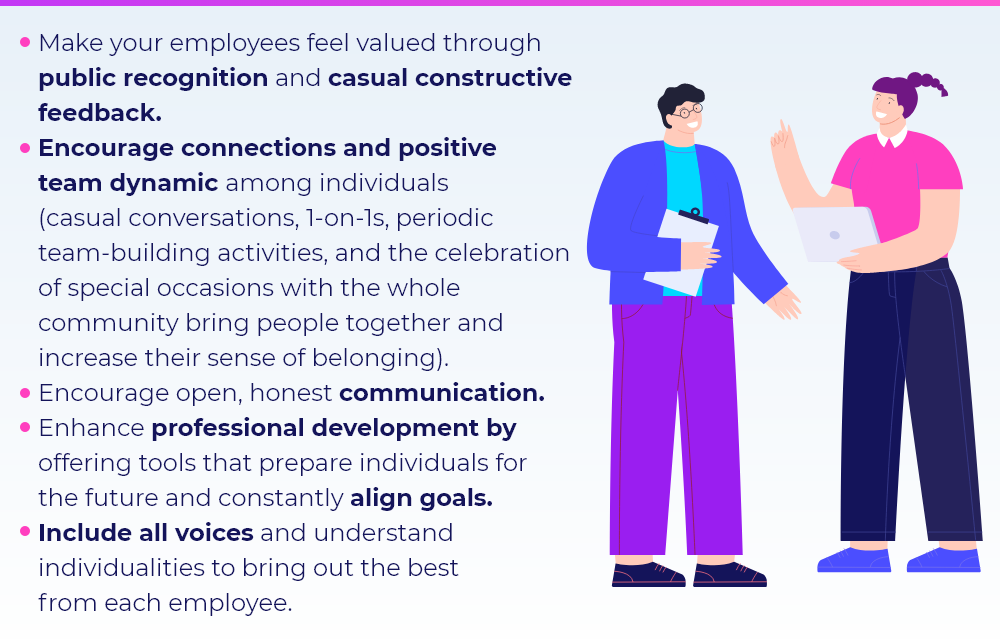Employee Retention: Nurture your Talent with the Right Culture
Written by María Eugenia Raffaele
After you’ve put in the time, effort and investment to recruit the best possible talent, what comes next? Employee retention. Find out how to keep your people engaged and committed throughout time with a culture that optimizes their experience everyday.
What’s the secret to keeping your top talent satisfied? How can you gauge if they are motivated enough? Many organizations have an employee retention plan and implement strategies to keep their community happy, healthy, and productive. Truth is, however, the global pandemic has not only changed where we work, but also how we feel at work, so examining your company culture and work climate is key to preventing future turnover.
In this new normal, with most of our remote workers juggling jobs and house care, promoting an optimal work-life balance can become a great challenge for top managers. So, how can you boost your employee retention today?
What is employee retention and why should you care?
Did you know that weak rapport, lack of professional growth, or bad communication, among other things, can cause employees to leave your organization? Simply put, employee retention is the effort businesses make to ensure their current talents become invested in the company’s mission, desiring to remain with the organization.
In the current climate of crisis and change, you may wonder whether talent retention should be a top priority. Our answer is “absolutely yes!” In fact, according to research carried out by Gallup, turnover is one of the most common self-inflicted challenges companies face. Check this out and see for yourself:
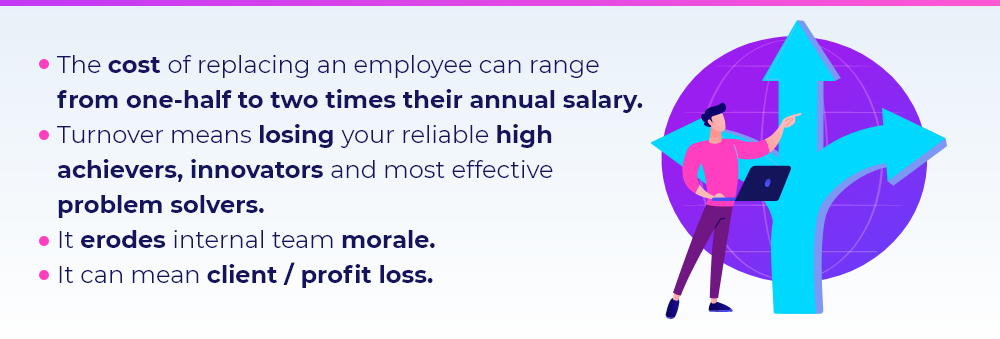
The good news here is that the turnover company’s most regret is preventable and pre-quitting behavior can be tackled before it’s too late. In fact, after leaving their job, 52% of employees report they feel their organization could have done something to retain them. This means that it’s fundamental for managers and HR to rethink their employment retention strategies and, if necessary, their corporate culture if they want to take job satisfaction to the next level.
Retaining employees: Benefits you should know about
Retention matters for small as well as big business. Broadly speaking, a successful employee retention approach will enable you to make a real difference in your staff’s sense of belonging, which represents a great competitive edge. Plus, it:
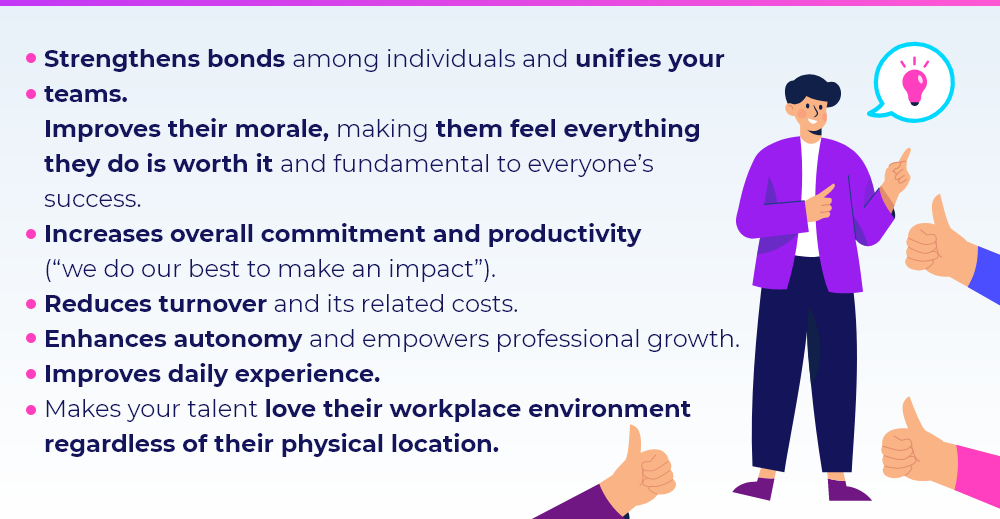
Ensuring employee retention without the physical component can be harder. This is why we suggest you build a digital culture that allows you to enrich people’s experience with human technology and AI to transcend physical boundaries, keeping them connected and aligned.
Start retaining employees immediately with our top-6 strategies
Nobody wants to see their most promising employees become disengaged and take flight, so we can help you tackle these issues right away.
Here’s how you can retain your talent by truly connecting with them, and making them feel part of an organizational culture that values them for who they are and what they do.
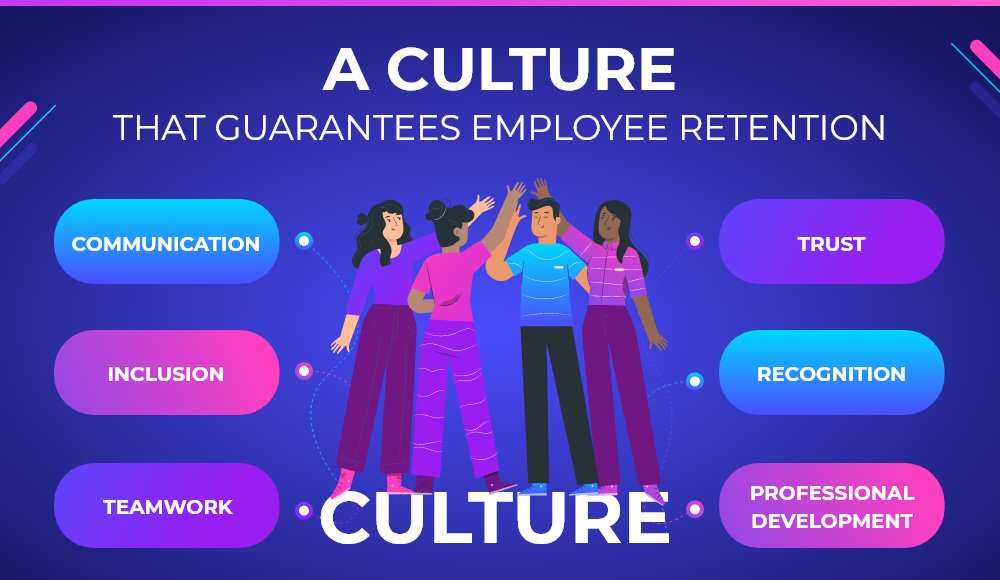
TIP #1 Let’s crunch the numbers: What’s your employee retention rate?
Here, we’re talking about the percentage of people who stay in your company over a specific time period. Calculating employee retention rate, as well as keeping track of it can be the smartest factor in planning effective strategies and anticipating possible future turnover.
How to calculate retention rate? The employee retention rate average equals the number of individuals who have stayed at your company for an entire set time period divided by the number of people you had at the start of such period. Multiply the result by 100, and voilá! That’s your retention rate.
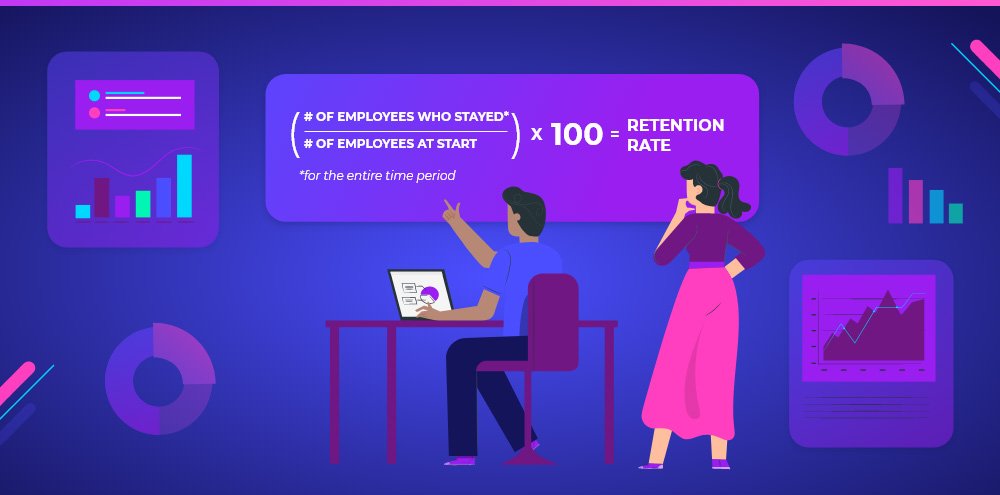
TIP #2: Examine current practices to identify what works (and what doesn’t)
How did that go? If your employee retention rate is low, it’s time to figure out where potential trouble spots may lie. Evaluate areas of improvement, strengths, and needs, then single out what works best and what doesn’t before you start brainstorming concrete solutions.
Without seeing a holistic picture of the dynamics of your organization, it’ll be harder to make sharper decisions. Be willing to employ technology and AI as your best allies in improving your management with people analytics and HR metrics to set measurable goals and make data-based actions. Are all your employees connected and actively participating? How can you tell?
TIP #3: Review current compensation: do you need to make any adjustments to be competitive enough?
Money isn’t everything, but you need to make sure you’re offering competitive compensation. Although many other cultural factors will make your employees love their job, they also need to see the effort they put in is worth their time. So we suggest you evaluate and adjust salaries regularly, and also consider whether you could provide other forms of compensation like bonuses, paid time off, or health benefits.
TIP #4: Adapt or tweak your organizational culture if necessary
Transformations and changes are often necessary to evolve. If your culture is more resistant to change, you’ll find it challenging to detect emerging needs and adapt to them successfully. Low employee retention is a direct reflection of your organizational culture. If you need to recalibrate and feel somewhat threatened by the inevitable challenges of transformations, you might be interested in this inspirational story. It demonstrates how cultural adaptations are not only possible during times of crisis, but also fundamental in encouraging behaviors that put individuals first.
TIP #5: Promote well-being to create a work environment people just love
Did you know that when employees feel their leaders care for their well being they are 81% less likely to seek out a new job? The equation here is simple: People experiencing a sense of well-being do better in life. Therefore, companies with thriving employees are more successful. Especially nowadays, when your talent is more prone to suffer burnout, a healthy corporate culture is a great strategy to ensure retention.
TIP #6: Make sure your leaders recognize people and make them visible
This is the last and one of the most effective talent-management strategies that will make people love their leaders. Horizontal human-centered cultures make it easier for management to ensure retention, especially when they:
